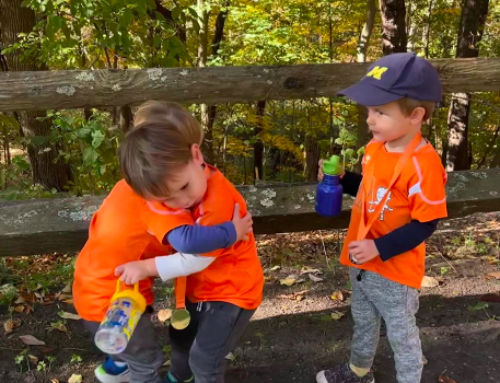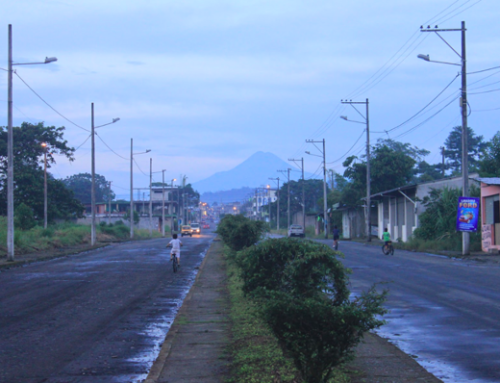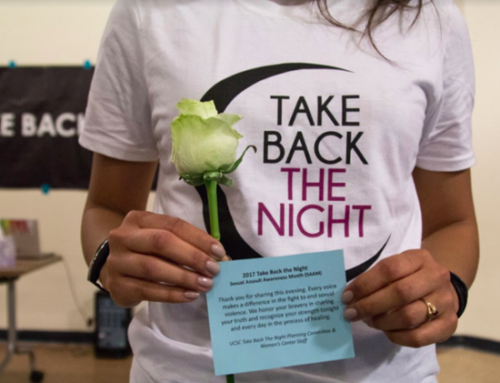Anthropologists have turned toward care in recent years with the hope that it might lead to a better understanding of the moral dynamics of contemporary social life (e.g. Mol et al 2010, Ticktin 2011). From the vantage point of kinship studies (e.g. Carsten 2000), for a while it seemed that “care” was a productively transverse slice into “kinship”—that it could help us to focus on behaviors and actions as opposed to the structures and terminologies of yore. Yet the more we try to make sense of care, the more it seems that we are operating around a fundamental tension between different sorts of “care,” a knot into which we are led by care’s status as a word in English that we have asked to do heavy analytical work (much like “kinship” itself). We could call this knot a “care/care problem,” as it resembles what David Graeber called the “value/values problem” (2013, 224).
As Elana Buch has persuasively argued, “‘care’ in English-speaking places connotes both affective concern (caring about) and practical action (caring for); often this duality of meaning contributes to beliefs that caring actions are best or most naturally motivated by caring feelings” (2015, 279; see also Thelen 2021). That is, at times care looks like specific actions aimed at bodily upkeep, especially of dependents (as in “care and feeding,” the title of Slate’s parenting advice column). And at other times we take care to refer to affection and sentiment.
In the middle ground between those two extremes of practicality and love is a remarkably productive and generative lens, even with all the caveats that care scholars have noted. This space between the extremes—the slash in the “care/care problem”—is a rich site where we can identify local norms of social relations and responsibility. Namely: in any one ethnographic context, at what moments and for what reasons do people crave, expect, offer, or withhold care? What does good care look like?
Care has been glossed as “some kind of engagement” (Tronto 1993), and care practices are thus an attempt to understand another and recognize what they need, through “attentive experimentation” (Mol et al. 2010, 13). These contingent actions of attempting to consider and recognize another person can “be interpreted as gestures of care that demonstrate how domestic relations are actualized” (Han 2011, 15). If people attempt to discern others’ needs and wishes, this implies both that they believe they have a shot at it (see Ricoeur 2005, 105–6; Leinaweaver 2013; Black 2018, 84) and that they have some motivation to do so. There is also much to be uncovered in the overlap between individual acts of care on one hand, and, on the other, the assurance that those acts of care themselves communicate that someone is cared for—and that, as Arnold (2021, 146) shows, “[m]ore than simply facilitating other modalities of care, communication itself constitutes a care practice.” When all of this takes place in the context of the marginal and precarious settings that anthropology urgently documents, and at a moment where our world feels racked by profound insecurity, we may find that refocusing on the small ways that people try to see and know one another might bring a glimpse of hope. It feels particularly fitting to do this using ethnographic methods, which themselves are (or try to be) grounded in a sincere desire to understand the perspectives and hopes of others.
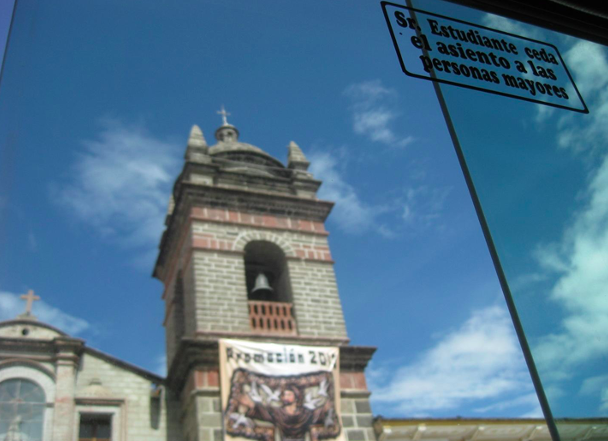
“Mister Student, yield your seat to senior citizens,” reads a bus window in Ayacucho. Photo by author.
In 2010 I wrote an article describing the “care slot,” the idea that there was a particular person whose role was tied to their social responsibility to care for another particular person (Leinaweaver 2010, see also Colen 1995). For example, if it is ideologically considered a mother’s job to raise a child, and at the same time, if she must be absent due to labor migration (Parreñas 2005), the responsibility falls on her to elicit care for that child from some other party. In that essay I proposed that migration produced other (sometimes overlapping) care slots as well: those vacated by adult children of aging parents, who often felt responsible to find someone who would tend to their elders (Leinaweaver 2010, 78). To illustrate this, I wrote about Cristina, an aging and widowed mother of six adult children, several of whom had migrated to Europe and others of whom lived on her block in the dusty outskirts of the Peruvian city of Ayacucho. Cristina’s children had imposed upon one of her godsons to send, from a neighboring village, his daughter to accompany Cristina (Leinaweaver 2010, 76).
Ten years after finishing the research for my first book (Leinaweaver 2008), I was back in Ayacucho for a few months, and learned from my godson, Cristina’s nephew, that Cristina was “malita”—not well. He described that she had mobility impairments because of treatments for the lung cancer that she had developed after cooking on a wood-burning fire in a small adobe kitchen for decades. (With remittances from her children in Europe, she had subsequently built a brick-and-mortar home and had a gas stove, but the damage had already been done.) My comadre (the mother of my godchildren), Cristina’s sister, described her as “like an infant (criatura) now,” because she can’t walk without help, she complains a lot about the girl who looks after her, and she sometimes needs attending to.
My goddaughter Olivia—Cristina’s niece—brought me one day to visit Cristina. Cristina was standing in her kitchen, clad in two heavy pollera skirts, a lacy petticoat, knitted tights, a cardigan, blue wool lined slippers, and a felt hat, and with white cotton plugs in both her ears to prevent aire—bad or harmful air causing illness (Finerman and Sackett 2003, 465). When she took off her hat to sneeze into it, I saw that she had become bald— though wisps of hair were visible around her hat, she no longer had her long braids. Olivia explained that during chemotherapy treatments some four years ago, Cristina had lost some vision, much of her hearing, and her hair. Olivia bent to place her mouth beside her aunt’s ear and hollered in Quechua to advise her of our arrival. Cristina smiled kindly and greeted me by name. She filled a bowl with water at her sink to prepare us some mote (hominy corn), resting the bowl on her wrist of the hand that operated the switch of the tap, as if it would otherwise be too heavy or her fingers too stiff.

Cristina in her kitchen. Photo by author.
Knowing that I had returned to Ayacucho to learn more about care of older people (Leinaweaver 2021), Olivia explained to me (in front of her deafened aunt) that Cristina would be a great interview for me. She lives on a block surrounded by her children and their families, but according to Olivia, her children are not truly with her: “It doesn’t always occur to them to go visit her. And she can’t walk to get to the door to let us in, nor can she hear us knock. So she is alone” (see Leinaweaver 2013). Her hearing loss made it less enjoyable for Cristina to speak on the phone she’d had installed to talk with her children in Europe. The strategy I detailed in my previous article, of having a godchild’s child co-reside with her, had come to an end after several years when the young woman moved out to be with her boyfriend and their child. Now, Olivia said, Cristina’s children pay a “girl” to accompany her during the week but—without the ties of kinship and compadrazgo—the companion doesn’t feel obliged, and sometimes leaves without announcing it. Olivia said “she cooks by herself other days—what if she burns herself?” My comadre, Olivia’s mother, later recounted how a neighbor had told them that Cristina was unhappy and kept asking him to bring her to her hometown on his motorcycle. To have been spoken to in this way by an affectionate neighbor seemed like a serious thing, and Olivia later brought it up again.
But though on one level she was inadequately cared for, in Olivia’s telling, Cristina also did receive acts of care, as I witnessed when I visited her with Olivia. I saw how Olivia brought Cristina her cane and then helped her to walk slowly down to the corner to watch a festive neighborhood soccer match. Cristina sat in the shade, resting her cane by her side. She said very little, only “CALOR!” (it’s so hot!). The following week, I watched and helped Olivia and her mother cook prawn soup, chupe de camarón, which Olivia then decanted into a reusable plastic container to bring to Cristina. When we got to Cristina’s, the “girl” let us in and brought us to the living room area, where Cristina was eating soup and a spinach omelet with rice, prepared by her companion. Olivia fetched a bowl and put the soup she had brought into it. She then filled a second bowl for Cristina’s companion. Upon being served, Cristina asked—in Quechua—if Olivia had separated out a portion for “the girl.” Olivia confirmed it; indeed, she had preemptively done so, knowing that Cristina would expect it. Olivia then spoke in slow Quechua at top volume, giving Cristina news about a relative’s health problems, before asking her some of the questions she knew I would want to know the answer to: who visits her, who calls her, what does she do all day, who pays the companion. Olivia’s linguistic choices struck me as well; Cristina used to talk to me in Spanish quite willingly, but now it was almost entirely Quechua.
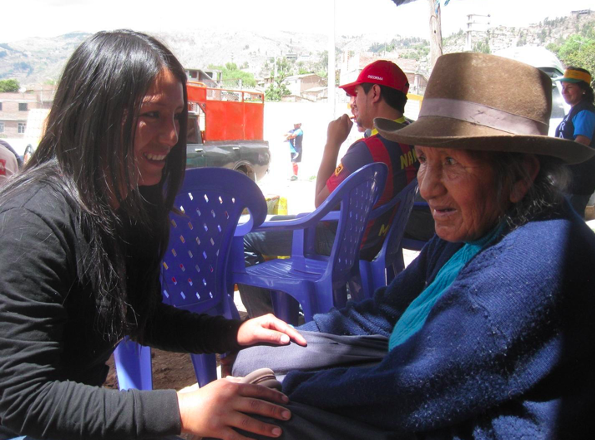
Olivia and Cristina at the neighborhood soccer game. Photo by author.
I am falling into the trap I identified already for researchers of care: we see these small acts and almost immediately interpret them as acts of consideration, acts that seem to imply that someone has thought about another person’s needs and attempted to respond to them. But by pausing and reflecting on this space between actions and their meanings, I can better recognize both actions and imputed or intended meanings as indices of social norms, expectations, and roles. Here, Olivia thought about her aunt’s hearing loss and increasing preference for Quechua, adjusting her own speech to take these into account. She thought about Cristina’s own sense of social responsibility to the “girl” who looked after her, and enacted that on Cristina’s behalf by dishing her up a bowl of soup. She considered how Cristina expressed that she was lonely and missing the social world she used to be a part of, and made efforts to visit her and to facilitate her enjoyment of a neighborhood soccer match. These examples suggest that actions of care and imputations that they mean care (care/care) are, when taken together, a rich index of social relations and responsibility. Olivia has often told me that her mother raised them to think of others and put themselves in others’ shoes. This broader moral orientation could certainly have served as the grounding for Olivia’s attempts to discern what Cristina might enjoy, and to meet her desires to the best of her ability. When Olivia offers this care, she is demonstrating that kinship is morally generative in the Andes and that it obliges recognizing others, thinking about what they value, and helping to facilitate it. When she contrasts it to the lack of obligation felt by a paid caregiver, she is also making an observation about the limits of care, within the constraints of a Peru where centralization and oppression leave Andeans without many economic resources to draw on, and heighten the importance of their social resources.
References
Arnold, Lynnette. 2021. “Communication as Care across Borders: Forging and Co-Opting Relationships of Obligation in Transnational Salvadoran Families.” American Anthropologist 123: 137-149. https://doi.org/10.1111/aman.13517
Black, Steven P. 2018. “The Ethics and Aesthetics of Care.” Annual Review of Anthropology 47:79-95. https://doi.org/10.1146/annurev-anthro-102317-050059
Carsten, Janet. 2000. “Introduction: Cultures of Relatedness.” In Cultures of Relatedness: New Approaches to the Study of Kinship, edited by Janet Carsten, 1–36. Cambridge: Cambridge University Press.
Colen, Shellee. 1995. “‘Like a Mother to Them’: Stratified Reproduction and West Indian Childcare Workers and Employers in New York.” In Conceiving the New World Order: The Global Politics of Reproduction, edited by Faye Ginsburg and Rayna Rapp, 78–102. Berkeley: University of California Press.
Finerman, R. and Sackett, R. 2003. “Using Home Gardens to Decipher Health and Healing in the Andes”. Medical Anthropology Quarterly 17: 459-482. https://doi.org/10.1525/maq.2003.17.4.459
Graeber, David. 2013. “It is Value that Brings Universes into Being.” HAU: Journal of Ethnographic Theory 3:2, 219-243. https://doi.org/10.14318/hau3.2.012
Han, Clara. 2011. “Symptoms of Another life: Time, Possibility, and Domestic Relations in Chile’s Credit Economy.” Cultural Anthropology 26: 7-32. https://doi.org/10.1111/j.1548-1360.2010.01078.x
Leinaweaver, Jessaca B. 2010. “Outsourcing Care: How Peruvian Migrants Meet Transnational Family Obligations.” Latin American Perspectives 37, 5: 67–87. https://doi.org/10.1177/0094582X1038
Mol, Annemarie, Ingunn Moser, and Jeannette Pols, editors. 2010. Care in Practice: On Tinkering in Clinics, Homes and Farms. Verlag, Bielefeld.
Parreñas, Rhacel Salazar. 2005. Children of Global Migration: Transnational Families and Gendered Woes. Stanford: Stanford University Press.
Ricœur, Paul. 2005. The Course of Recognition. Cambridge: Harvard University Press.
Thelen, Tatjana. 2021. “Care As Belonging, Difference, and Inequality.” In Oxford Research Encyclopedia of Anthropology. Oxford: Oxford University Press. https://doi.org/10.1093/acrefore/9780190854584.013.353
Tronto, Joan. 1993. Moral Boundaries: A Political Argument for an Ethic of Care. London: Routledge.
Jessaca Leinaweaver is Professor of Anthropology at Brown University, serving as Chair of the Anthropology Department from 2020-2023 and as Director of the Center of Latin American and Caribbean Studies from 2016-2019. She is the author of The Circulation of Children: Adoption, Kinship, and Morality in Andean Peru (Duke, 2008), which won the Margaret Mead Award. Her second book is Adoptive Migration: Raising Latinos in Spain (Duke, 2013). Leinaweaver’s research has been supported by the Fulbright IIE, the Wenner-Gren Foundation, the National Science Foundation, and the Social Sciences and Humanities Research Council of Canada, among others. Her op-eds on migration, adoption, and child welfare have been published in multiple venues, including U.S. News and the CBC. ORCID 0000-0002-9178-7624 @jessacabeza
